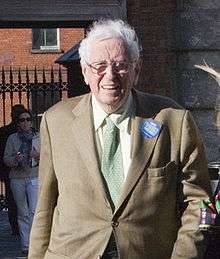Irish general election, 1981
| | |||||||||||||||||||||||||||||||||||||||||||||||||||||||||||||||||||||||||||||||||||||||||||||||||||||||||||||||||||
| |||||||||||||||||||||||||||||||||||||||||||||||||||||||||||||||||||||||||||||||||||||||||||||||||||||||||||||||||||
| |||||||||||||||||||||||||||||||||||||||||||||||||||||||||||||||||||||||||||||||||||||||||||||||||||||||||||||||||||
|
| |||||||||||||||||||||||||||||||||||||||||||||||||||||||||||||||||||||||||||||||||||||||||||||||||||||||||||||||||||
| Percentage of seats gained by each of the three major parties, and number of seats gained by smaller parties and independents. | |||||||||||||||||||||||||||||||||||||||||||||||||||||||||||||||||||||||||||||||||||||||||||||||||||||||||||||||||||
| |||||||||||||||||||||||||||||||||||||||||||||||||||||||||||||||||||||||||||||||||||||||||||||||||||||||||||||||||||
The Irish general election of 1981 was held on 11 June 1981, three weeks after the dissolution of the Dáil on 21 May. The newly elected 166 members of the 22nd Dáil assembled at Leinster House on 30 June when a new Taoiseach and government were appointed.
The general election took place in 41 parliamentary constituencies throughout Ireland for 166 seats in the lower house of parliament, Dáil Éireann. The number of seats in the Dáil was increased by 18 from 148 to 166.
Campaign
The general election of 1981 was the first one of five during the 1980s. The election also saw three new leaders of the three main parties fight their first general election. Charles Haughey had become Taoiseach and leader of Fianna Fáil at the end of 1979, Garret FitzGerald was the new leader of Fine Gael and Frank Cluskey was in charge of the Labour Party.
Haughey and Fianna Fáil seemed extremely popular with the electorate in early 1981. He was expected to call the election at the time of the Fianna Fáil ardfheis on 14 February, but the Stardust fire caused the ardfheis to be postponed, and the Republican hunger strike in the Maze Prison began in March.[1] By the dissolution in May, much of the earlier optimism in the party had filtered out. The Anti H-Block movement fielded abstentionist candidates in solidarity with the hunger strikers, undermining the Republican credentials of Fianna Fáil.
Fianna Fáil's manifesto promised the electorate more spending programmes and Fine Gael put forward a series of tax-cutting plans.
Result
| Party | Leader | Seats | ± | % of seats |
First Pref votes |
% FPv | ±% | |
|---|---|---|---|---|---|---|---|---|
| Fianna Fáil | Charles Haughey | 78 | –6 | 47.0 | 777,616 | 45.3 | –5.3 | |
| Fine Gael | Garret FitzGerald | 65 | +22 | 39.2 | 626,376 | 36.5 | +6.0 | |
| Labour Party | Frank Cluskey | 15 | –2 | 9.0 | 169,990 | 9.9 | –1.7 | |
| Anti H-Block | None | 2 | New | 1.2 | 42,803 | 2.5 | – | |
| Sinn Féin (Workers' Party) | Tomás Mac Giolla | 1 | +1 | 0.6 | 29,561 | 1.7 | 0 | |
| Socialist Labour Party | Noël Browne | 1 | New | 0.6 | 7,107 | 0.4 | – | |
| Socialist Party of Ireland | Eamonn O'Brien | 0 | New | 0 | 571 | 0.0 | – | |
| Communist Party | Eugene McCartan | 0 | 0 | 0.0 | 358 | 0.0 | – | |
| Independent | N/A | 4 | 0 | 2.4 | 63,829 | 3.7 | –1.8 | |
| Spoilt votes | 16,168 | — | — | |||||
| Total | 166 | +18 | 100 | 1,734,379 | 100 | — | ||
| Electorate/Turnout | 2,275,450 | 76.2% | — | |||||
Independents include Independent Fianna Fáil (13,546 votes, 1 seat).
- Fine Gael–Labour Party minority coalition government formed.
When the votes were counted the result was inconclusive. Fianna Fáil lost seats as a result of sympathy to the Anti H-Block candidates and the attractive tax proposals of Fine Gael. It was the worst performance for Fianna Fáil in twenty years. Meanwhile, Labour Party leader Frank Cluskey lost his seat, necessitating a leadership change with Michael O'Leary succeeding Cluskey. A Fine Gael–Labour Party coalition government came to power with Garret FitzGerald becoming Taoiseach.
Dáil membership changes
The following changes took place as a result of the election:
- 20 outgoing TDs retired
- 18 new seats were created
- 127 outgoing TDs stood for re-election (also Pádraig Faulkner, the outgoing Ceann Comhairle who was automatically returned)
- 109 of those were re-elected
- 18 failed to be re-elected
- 56 successor TDs were elected
- 50 were elected for the first time
- 6 had previously been TDs
- There were 7 successor female TDs, replacing 3 outgoing, increasing the total by 4 to 11.
Where more than one change took place in a constituency the concept of successor is an approximation for presentation only. Where a number of related constituency changes took place in an area, such as Cork, the outgoing constituency for retiring TDs and the allocation of new seats are approximations for presentation only. Outgoing TDs re-elected in a new constituency, with no related changes, are not recorded as a change
See also
References
- ↑ Penniman, Howard Rae; Farrell, Brian; Research, American Enterprise Institute for Public Policy (1 June 1987). Ireland at the polls, 1981, 1982, and 1987: a study of four general elections. Duke University Press. p. 7. ISBN 978-0-8223-0786-0. Retrieved 23 October 2010.
- ↑ "22nd Dáil 1981 General Election". ElectionsIreland.org. Retrieved 20 June 2009.
- ↑ "Dáil elections since 1918". ARK Northern Ireland. Retrieved 20 June 2009.
- ↑ Nohlen, D & Stöver, P (2010) Elections in Europe: A data handbook, pp1009-1017 ISBN 978-3-8329-5609-7




